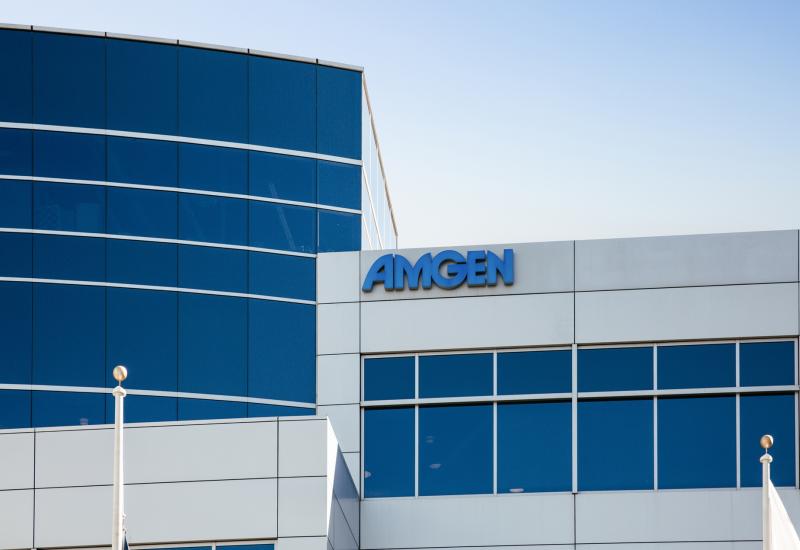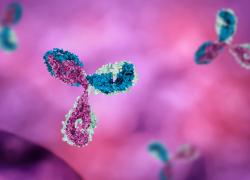
Pfizer takes multiple shots on goal
The company’s post-Seagen ADC portfolio features overlapping targets with differing payloads.
The company’s post-Seagen ADC portfolio features overlapping targets with differing payloads.

Having completed its $43bn acquisition of Seagen in December Pfizer wants it to be known that it’s making a major push into oncology, a move some might see as an attempt to regain ground lost to Merck & Co and AstraZeneca. And, far from streamlining the newly integrated Seagen portfolio, the plan appears to be to test overlapping mechanisms and modalities.
That’s one message that emerged from yesterday’s “oncology innovation day”, which was effectively Pfizer’s debutante ball for the post-Seagen organisation. Thus the company is taking no fewer than three shots at PD-(L)1, for instance, while two separate antibody-drug conjugates are in development against CD30, in addition to Seagen’s marketed anti-CD30 workhorse, Adcetris.
One reason for such overlaps is a desire to test different ADC designs against the same target. Indeed, across the enlarged Pfizer ADC portfolio, there is no single payload that predominates, and instead the company is highlighting assets using the MMAE (auristatin) vedotin, next-generation MMAE, topoisomerase 1 as well as other novel warheads.
Earlier lines?
Pfizer yesterday offered a mechanistic rationale, claiming that vedotin-based ADCs were especially good at combining with PD-(L)1 blockade, and would thus be pushed into early lines of treatment.
That said, the group isn’t ignoring the massive industry trend, driven by Daiichi Sankyo, to develop ADCs using topoisomerase 1 payloads, and its R&D portfolio features plenty of these too. Accordingly, one of the two Adcetris follow-ons (PF-08046044) uses topoisomerase 1, while the other (PF-08046045) a payload Pfizer calls a novel tripeptide auristatin.
In PD-(L)1 blockade Pfizer’s most advanced focus is on the SC MAb sasanlimab, but now two ADCs are in play too: PF-08046054 uses a vedotin payload, while the warhead on PF-08046037 is a TLR7 agonist. The latter seems to be derived from preclinical work Seagen had published on TLR7/8 agonist payloads, meaning that the entire ADC pipeline Pfizer highlighted yesterday had either been licensed in or acquired through Seagen.
The company also highlighted felmetatug vedotin, an ADC against B7-H4, a target that last year saw GSK license Hansoh Pharma's HS-20089 for $85m up front. SGN-B7H4C, a separate anti-B7-H4 ADC that uses a topoisomerase 1 payload, is preclinical, while Pfizer recently discontinued an anti-B7-H4 T-cell engager, PF-07260437.
The company also revealed in January that three Seagen-originated ADCs were no longer being developed: SGN-TGT, SGN-ALPV and SGN-STNV. However, these had already been quietly discontinued by Seagen, so their removal from the pipeline can’t directly be put down to the takeover by Pfizer.
Selected ADCs in Pfizer's R&D pipeline
| Project | Target | Payload | Source | Status |
|---|---|---|---|---|
| Disitamab vedotin | HER2 | MMAE (vedotin) | Seagen (licensed from RemeGen, Aug 2021) | Ph3 Keytruda combo in 1L urothelial, ph2 in breast (HER2+ve & low) |
| Sigvotatug vedotin | Integrin β6 | MMAE (vedotin) | Seagen (earlier coded SGN-B6A) | Ph3 in 2/3L NSCLC |
| Felmetatug vedotin | B7-H4 | MMAE (vedotin) | Seagen (earlier coded SGN-B7H4V) | Ph1 dose optimisation in breast, ovarian & endometrial |
| SGN-B7H4C | B7-H4 | Topo1 | Seagen | Preclinical |
| PF-08046054 | PD-L1 | MMAE (vedotin) | Seagen (earlier coded SGN-PDL1V) | Ph1, promise in PD-L1+ve head & neck |
| PF-08046037 | PD-L1 | TLR7 agonist | Seagen (had worked preclinically on TLR7 & TLR8 agonist payloads) | IND expected 2024, targeting NSCLC, head & neck, melanoma |
| PF-08046045 | CD30 | Next-gen tripeptide MMAE | Seagen (earlier coded SGN-35T) | Ph1 in CD30+ve lymphomas |
| PF-08046044 | CD30 | Topo1 | Seagen (earlier coded SGN-35C) | Ph1 to start enrolment 2024, targeting Hodgkin’s lymphoma (improved tol & ther index vs Adcetris) |
| PF-08046050 | CEACAM5 | Topo1 | Seagen (earlier coded SGN-CEACAM5C), partnered with Sanofi | Ph1 promise in lung & colorectal |
| PF-08052666 | Mesothelin | Topo1 | Partnered with Harbour Biomed (earlier coded HBM9033) | Ph1 to start enrolment 2024 |
Source: 29 Feb Pfizer oncology innovation day & OncologyPipeline.
5129













